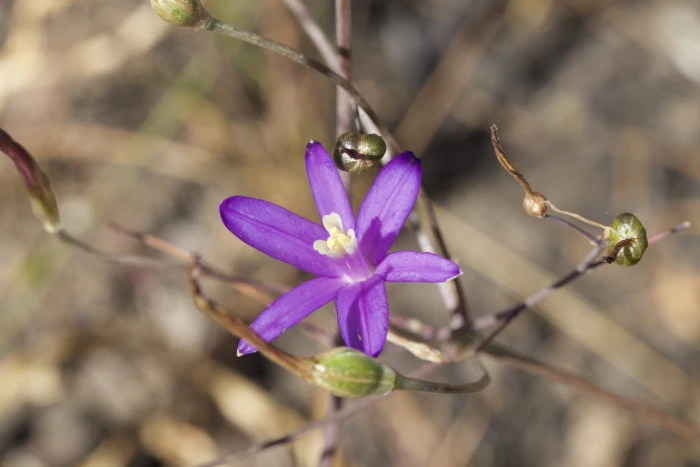California Brodiaea
(Brodiaea californica)
California Brodiaea (Brodiaea californica)
/
/

© Arvel Hernandez
CC BY-SA 4.0
Image By:
© Arvel Hernandez
Recorded By:
Copyright:
CC BY-SA 4.0
Copyright Notice:
Photo by: © Arvel Hernandez | License Type: CC BY-SA 4.0 | License URL: http://creativecommons.org/licenses/by-sa/4.0/ | Uploader: arvel | Publisher: iNaturalist |






















Estimated Native Range
Climate Requirements for Randburg, South Africa
| This Plant | Your Site | Plant Suitability for Your Location | ||
|---|---|---|---|---|
| • Precipitation | 13" - 61" | 29" | You should be able to grow this plant with no additional irrigation. | Excellent |
| • High Temp. | 71°F - 102°F | 80°F | Your summer temperatures are normal for this plant. | Excellent |
| • Low Temp. | 30°F - 38°F | 36°F | Your winter temperatures are normal for this plant | Excellent |
This plant should grow very well at your location without additional irrigation.
Summary
Brodiaea californica, commonly known as California brodiaea, is a perennial herb that grows from a corm, and is native to the grasslands and open woodlands of California and Oregon. It is the largest species in its genus, with a typical height of up to 30 inches. The plant features clusters of funnel-shaped flowers that bloom in late spring to early summer, with colors ranging from deep purple to lavender, and less commonly, white or pink. The flowers are borne on erect, leafless stalks and are quite showy, making them attractive in naturalistic plantings.
California brodiaea is valued for its drought tolerance and is often used in wildflower meadows, native plant gardens, and as a cut flower due to its long stems and striking blooms. It prefers full sun to light shade and requires well-drained soils; it is particularly adapted to survive dry summer conditions by going dormant after flowering. While generally low maintenance, it can be susceptible to root rot if overwatered. This species is not typically associated with aggressive roots or significant disease problems.CC BY-SA 4.0
California brodiaea is valued for its drought tolerance and is often used in wildflower meadows, native plant gardens, and as a cut flower due to its long stems and striking blooms. It prefers full sun to light shade and requires well-drained soils; it is particularly adapted to survive dry summer conditions by going dormant after flowering. While generally low maintenance, it can be susceptible to root rot if overwatered. This species is not typically associated with aggressive roots or significant disease problems.CC BY-SA 4.0
Plant Description
- Plant Type: Herb, Bulb
- Height: 1-2 feet
- Width: 0.5-1 feet
- Growth Rate: Moderate
- Flower Color: Pink, Purple, White
- Flowering Season: Spring, Summer
- Leaf Retention: Deciduous
Growth Requirements
- Sun: Full Sun
- Water: Medium
- Drainage: Medium
Common Uses
Bee Garden, Butterfly Garden, Deer Resistant, Low Maintenance
Natural Habitat
Native to the grasslands and open woodlands of California and Oregon
Other Names
Common Names: Wild Hyacinth
Scientific Names: Brodiaea californica, Hookera californica
GBIF Accepted Name: Brodiaea californica